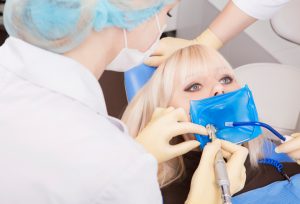Everything You Need to Know About Root Canal Therapy
Are you one of the many people who hears the term “root canal” and immediately cringes? Many people who’ve never had one assume that they’re painful experiences that they’d never want to go through. The truth is that they’re likely not as bad as you think. Read on to learn common symptoms that may indicate a need for a root canal, what exactly a root canal is, and more!
Top signs you may need a root canal
In many cases, there are no symptoms that indicate a root canal is necessary. That’s why it’s important to get your regular cleanings and dental exams. However, people who do have symptoms may experience:
- A pimple-like abscess on their gums.
- Swelling.
- A new sensitivity to hot and / or cold.
- Tenderness.
- Severe tooth pain.
If you have any of these symptoms then you’ll want to make an appointment with California Dental Group as soon as possible.
The top three reasons you may need root canal therapy
Root canal therapy is a successful procedure for several different needs. The most common three reasons people get root canals are:
- Decay on or in their tooth has reached the living tissue in their tooth, otherwise known as tooth pulp.
- Their tooth has suffered from some type of injury and / or trauma.
- An infection and / or abscess occurred inside the tooth or at the tip of the root.
The ins and outs of a root canal
A root canal procedure may be done in a single appointment but it may require more than one. It may be completed by your dentist or you may be sent to a root canal specialist, otherwise known as an endodontist.
The first step during the procedure will be to numb up your mouth so you don’t feel any pain. Then a rubber sheet is put around your tooth. This keeps the tooth dry and prevents saliva from getting in the way as the procedure is done. An opening is then made at the top of your tooth and several root canal files are put into your tooth, one at a time, and the pulp is removed, along with infected material and your nerve tissue. If tooth decay is present as well, then a special instrument will be used to remove it as well.
When those steps are complete, your tooth will be cleaned to remove any bacteria and the roots of the inside of your tooth will be filled. This filling will cover the opening on the top of the tooth and then a crown will be placed on top. The crown is helpful in preventing the tooth from breaking and ensuring you continue to have full use of your tooth.
Once your treatment is complete, you may still have sensitivity but this will go away as your tooth heals. At California Dental Group we’ll give you comprehensive after-care instructions to help you prevent it from being re-infected. Do you still have questions? Call us today at (800) 407-0161!





